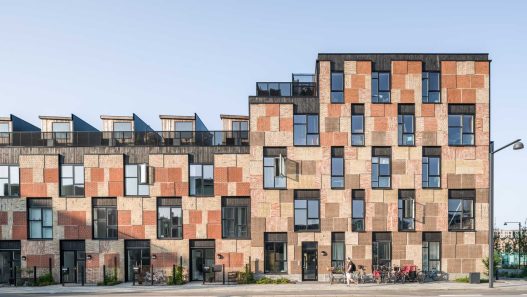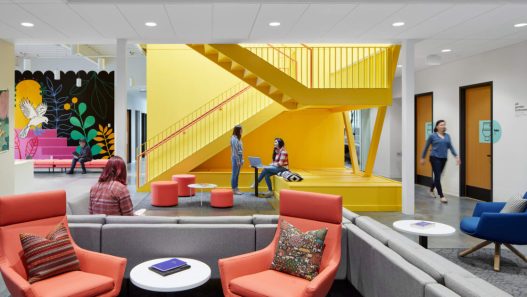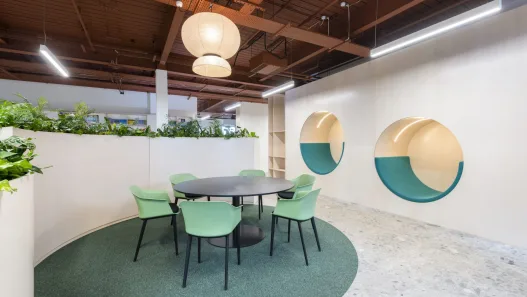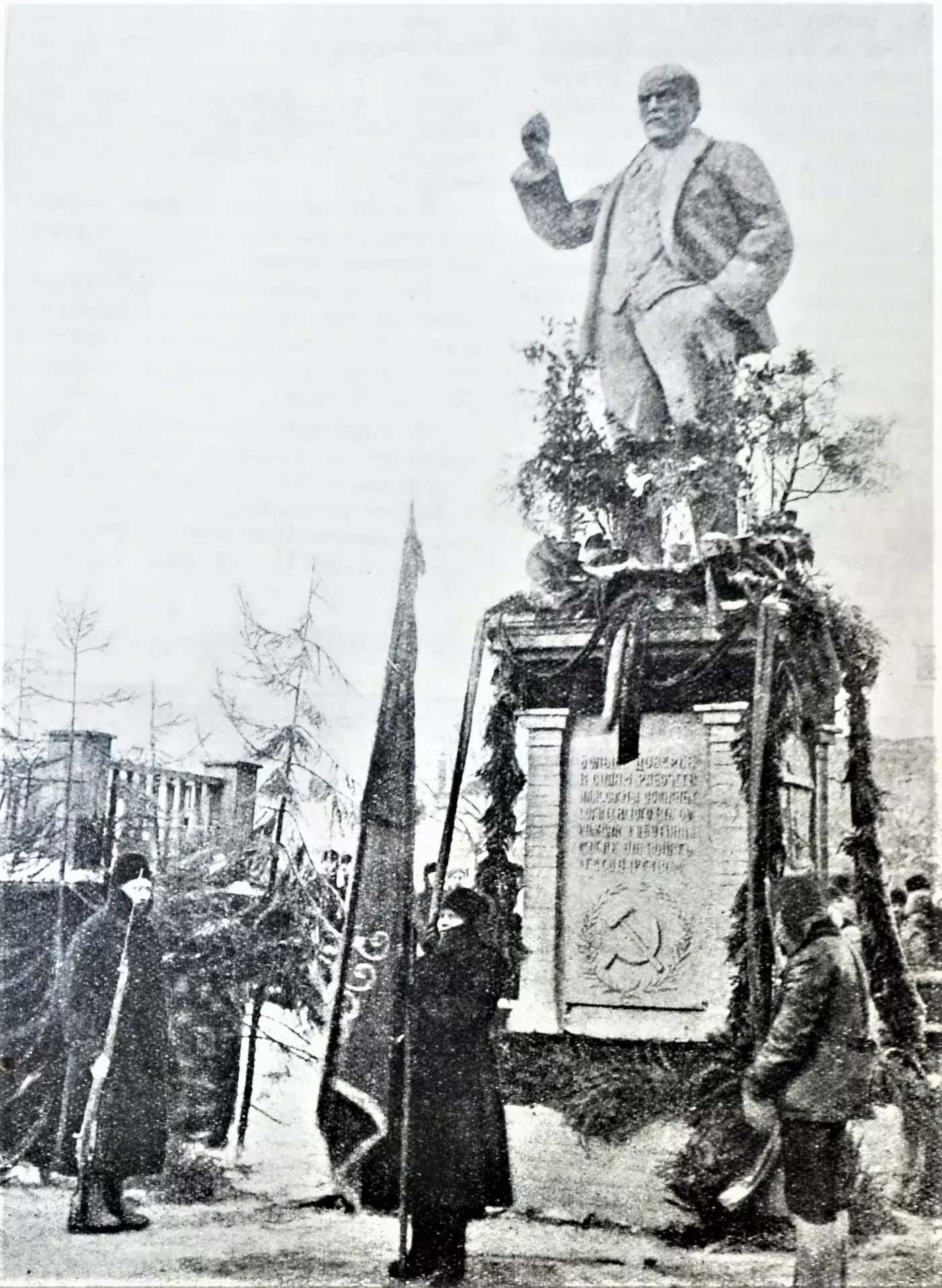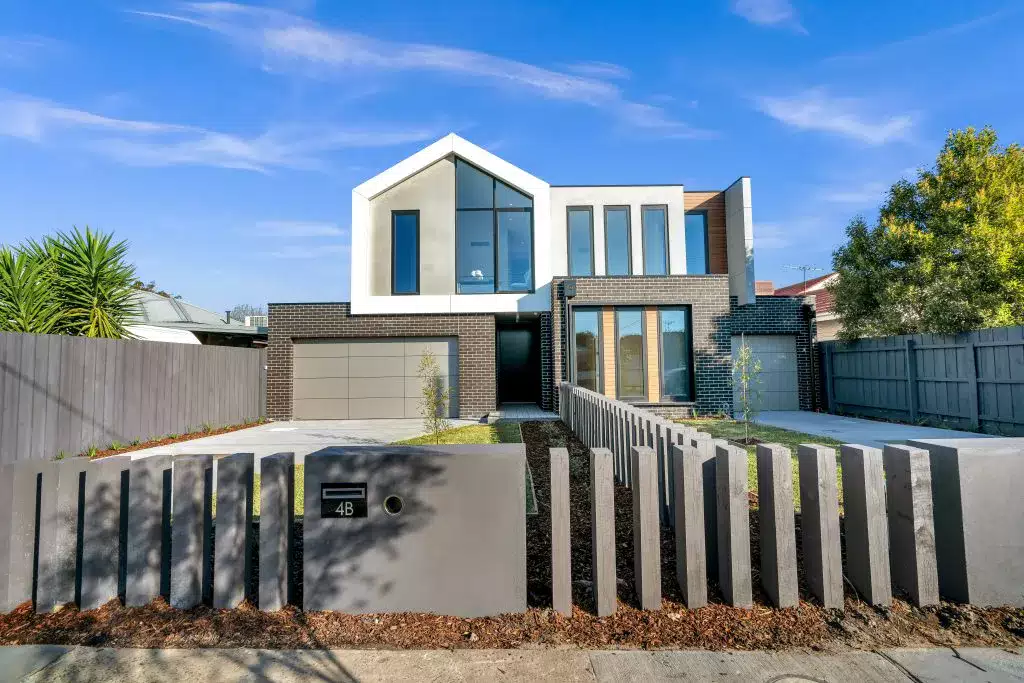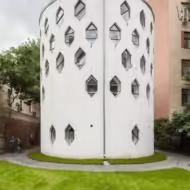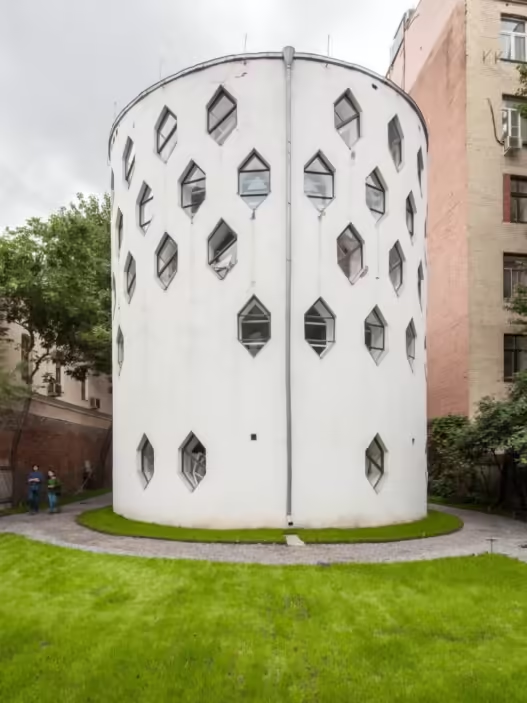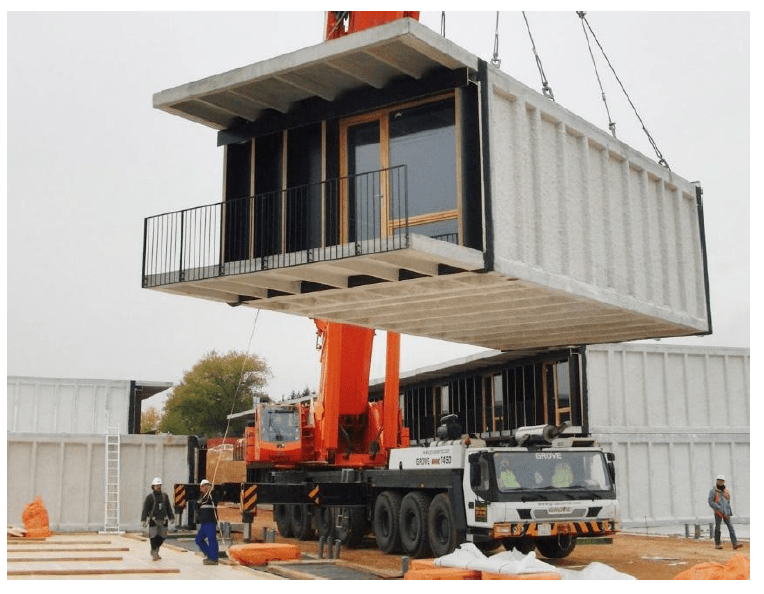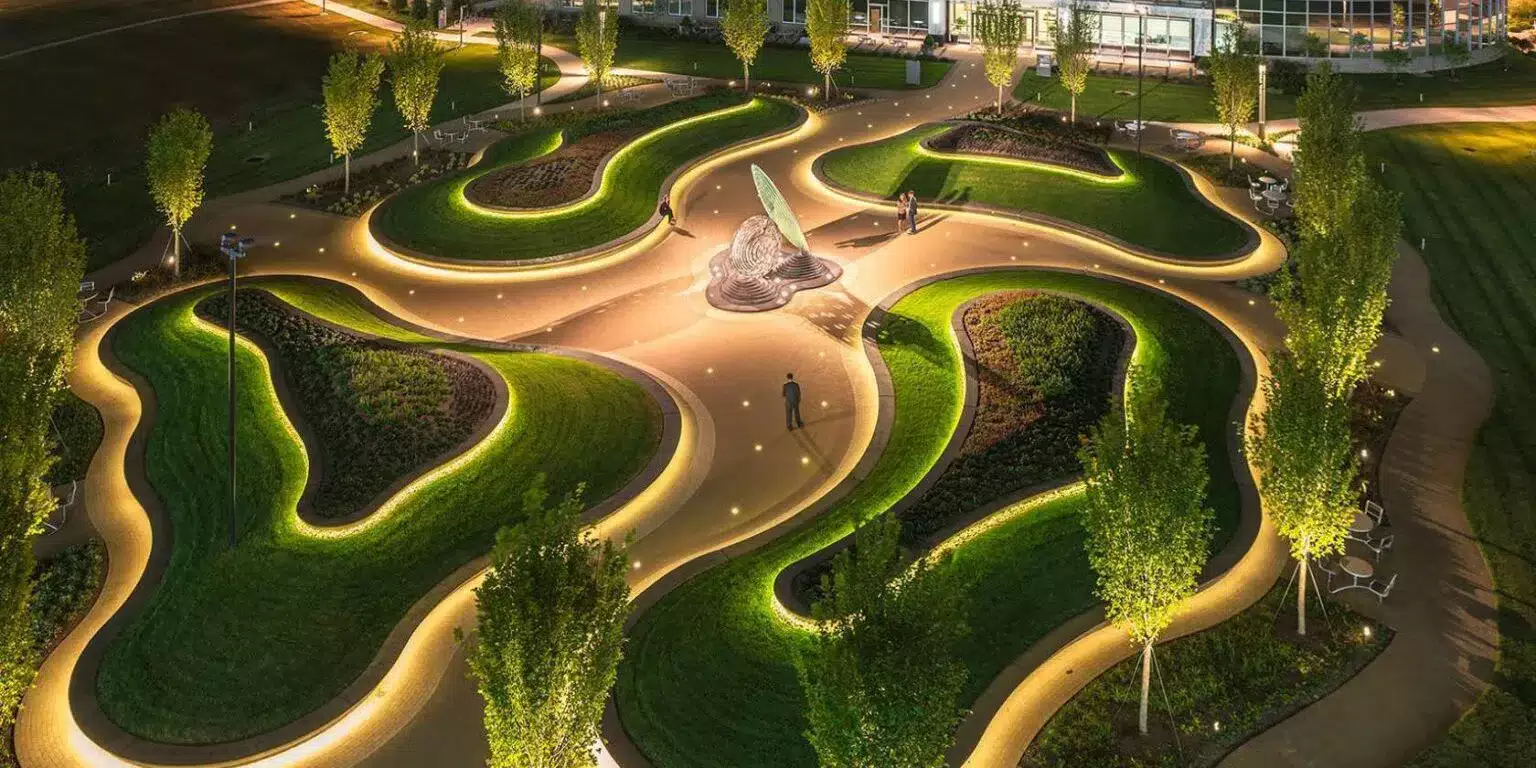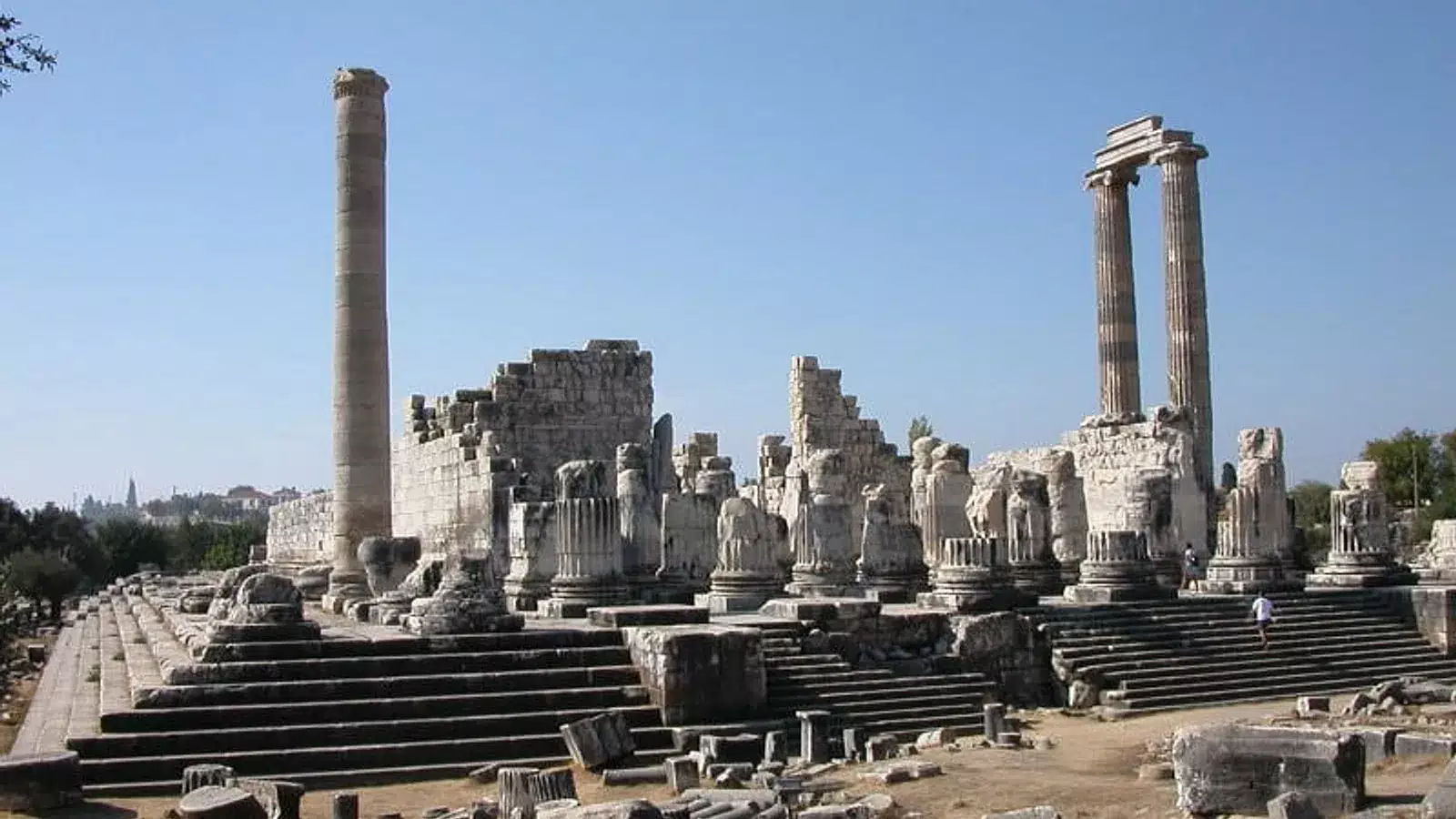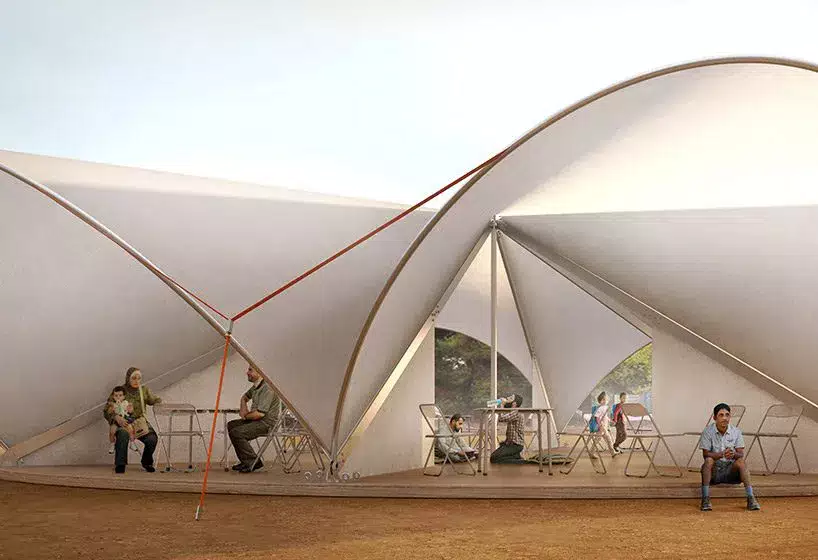Architecture is one of the most tangible and magnificent expressions of cultural heritage, bearing the traces of civilizations. Throughout history, different political regimes have used architecture as a tool to reflect their power and ideologies. In this context, it should be revealed that architecture is not only about aesthetics and functionality, but also a reflection of social values, political power balances and ideological messages.
Especially the buildings constructed during the periods of totalitarian regimes, democracies, monarchies and revolutionary movements help us understand the spirit of that period and the character of power. How each period and form of government left its mark on architecture, which styles it adopted and their effects on the social structure should be analyzed in detail.

Ranging from antiquity to modern times, this analysis will cover themes such as totalitarian regimes’ efforts to show their power through monumental and oppressive structures, democracies’ preference for simpler and more public-embracing architecture, and revolutions’ desire to break away from the old regimes through innovative and radical designs. The roles of architects and urban planners in these processes and the art and cultural policies of the regimes will also be analyzed.
These evaluations in the historical and cultural context emphasize that architecture is not only the art of building a structure, but also a mirror of powers and societies.
The Impact of Fascist Ideology on Architectural Styles in Italy in the 20th Century
Known for its rich cultural heritage and historical landmarks, Italy experienced a significant transformation in architectural styles in the 20th century. One of the most important factors influencing this change was the rise of fascist ideology under the leadership of Benito Mussolini. An authoritarian and nationalist political ideology, fascism had a profound impact on various aspects of Italian society, including architecture.

Fascist Ideology and Architecture
Fascist ideology emphasized the glorification of the state, the promotion of national identity, and the exaltation of power and authority. These principles were reflected in the architectural styles of the period, which aimed to convey a sense of grandeur, power and unity. The fascist regime tried to use architecture as a propaganda tool, projecting an image of power and control.
Rationalist Architecture
One of the architectural styles that emerged during this period was Rationalism. Rationalist architecture, also known as Italian Rationalism, is characterized by its simplicity, functionality and geometric forms. It rejected the ornamental and decorative elements of traditional architecture in favor of clean lines and minimalist designs. Rationalist architects believed that architecture should serve a social purpose and be a reflection of the ideals of the fascist regime.

Examples of Fascist Architecture in Italy
Many iconic buildings and structures were built in Italy during the fascist period, showing the influence of fascist ideology on architectural styles.
An important example is the Foro Mussolini in Rome, now known as the Foro Italico. This sports complex was designed to showcase the power and athleticism of the fascist regime. It includes imposing structures such as the Stadio dei Marmi (Stadium of Marbles), with statues of muscular athletes symbolizing the idealized fascist body.

The Legacy of Fascist Architecture
Despite the controversial nature of fascist ideology, the architectural styles that emerged during this period continue to leave a lasting impact on the Italian landscape. Many of these buildings and structures still stand today and serve as a reminder of Italy’s complex history. While some see them as symbols of a dark past, others appreciate their architectural significance and historical value.
The Impact of Socialist and Communist Ideologies on Architectural Styles in Eastern Europe in the 20th Century
The 20th century witnessed the rise of socialist and communist ideologies in Eastern Europe, leading to significant changes in architectural styles. Focusing on collective ownership, social equality and the rejection of capitalism, these ideologies had a profound impact on the region’s built environment.
Socialist Realism
One of the dominant architectural styles that emerged under socialist and communist rule was Socialist Realism. This style aimed to depict the ideals of the working class and the achievements of the socialist state. It emphasized simplicity, functionality and the use of traditional materials. Socialist Realist architecture often featured monumental buildings, public spaces and majestic sculptures symbolizing the power and unity of the socialist regime.

Collective Housing
Another notable aspect of architectural development in Eastern Europe during this period was the construction of mass housing projects. Socialist and communist governments prioritized the provision of affordable housing for the working class, leading to the construction of large-scale housing complexes. These complexes were often characterized by their uniformity, standardized design and shared facilities. The aim was to create egalitarian living environments that fostered a sense of collective identity and solidarity.
Examples of Socialist and Communist Architecture in Eastern Europe
Eastern Europe is full of examples of socialist and communist architecture, reflecting the influence of socialist and communist ideologies. One iconic example is the Palace of Parliament in Bucharest, Romania. Built during the reign of Nicolae Ceausescu, this massive building is one of the largest administrative buildings in the world. Its colossal size and ornate detailing reflect the grandeur and ambition of the communist regime.
Another important example is the Nowa Huta district in Kraków, Poland. Built in the 1950s, Nowa Huta was designed as a model socialist city. It has wide boulevards, spacious squares and large housing estates. At the center of the district is the Lenin Steel Plant, a symbol of industrial progress and the socialist ideal.

Sosyalist ve Komünist Mimarlığın Mirası
The architectural styles that emerged under socialist and communist rule in Eastern Europe continue to shape the region’s urban landscape. While some of these buildings and structures have fallen into disrepair or been reused, others are still cherished as important cultural and historical landmarks. They are reminders of the region’s socialist past and the aspirations of a bygone era.
The Impact of Capitalist Ideology on Architectural Styles in Western Europe and North America in the 20th Century
Capitalism, an economic and political system based on private property and free market competition, had a significant influence on architectural styles in Western Europe and North America throughout the 20th century. The pursuit of profit, individualism and consumerism shaped the built environment, resulting in a variety of architectural expressions that reflect the values and aspirations of capitalist societies.
Modernism and International Style
One of the architectural movements that emerged during this period was Modernism, which was closely associated with capitalist ideology. Modernist architects sought to break away from traditional architectural forms and embrace new technology and materials. A subset of Modernism, the International Style emphasized simplicity, functionality and the use of industrial materials such as steel, glass and concrete.
Skyscrapers and Urbanization
The rise of capitalism has also led to the development of skyscrapers and the transformation of the urban landscape. The construction of tall buildings became a symbol of economic progress and corporate power. With their sleek and tall designs, skyscrapers showcased the ambition and innovation of capitalist societies. Cities such as New York and Chicago became synonymous with iconic skyscrapers such as the Empire State Building and the Sears Tower (now known as the Willis Tower).
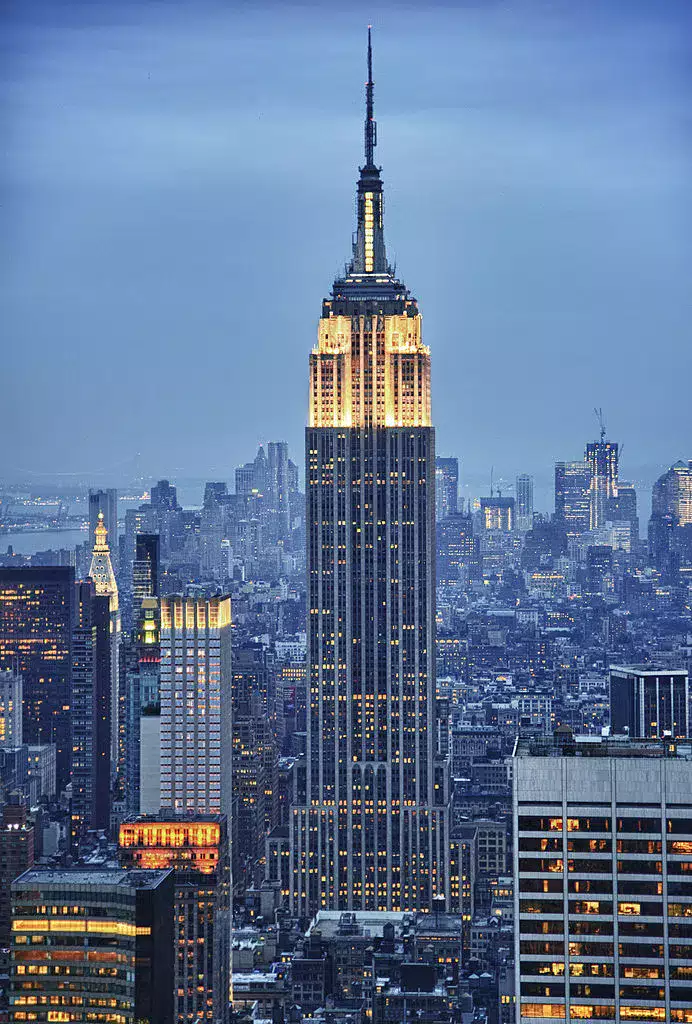

Suburbanization and the American Dream
The impact of capitalism in North America has also manifested itself in the phenomenon of suburbanization. The post-war period witnessed the rapid expansion of suburban communities fueled by the desire for homeownership and the pursuit of the American Dream. Suburban architecture often featured single-family homes, large yards, and car-centered design. The suburban lifestyle became synonymous with upward mobility and the promise of a better life

Batı Avrupa ve Kuzey Amerika’da Kapitalist Mimari Örnekleri
Batı Avrupa ve Kuzey Amerika, kapitalist ideolojinin etkisini yansıtan çok sayıda kapitalist mimari örneğine ev sahipliği yapmaktadır. İkonik örneklerden biri Frank Lloyd Wright tarafından tasarlanan New York’taki Guggenheim Müzesi‘dir. Kendine özgü spiral şekli ve alışılmadık tasarımıyla bu müze, kapitalizmin teşvik ettiği yenilikçilik ve sanatsal ifade ruhunu somutlaştırmaktadır.
Bir diğer kayda değer örnek ise Richard Rogers tarafından tasarlanan Londra’daki Lloyd’s Binası‘dır. Bu ikonik yapı, açıkta kalan yapısal elemanları ve yüksek teknoloji estetiğiyle, kapitalist dünyanın kalbindeki finans sektörünün dinamizmini ve rekabet gücünü temsil etmektedir.

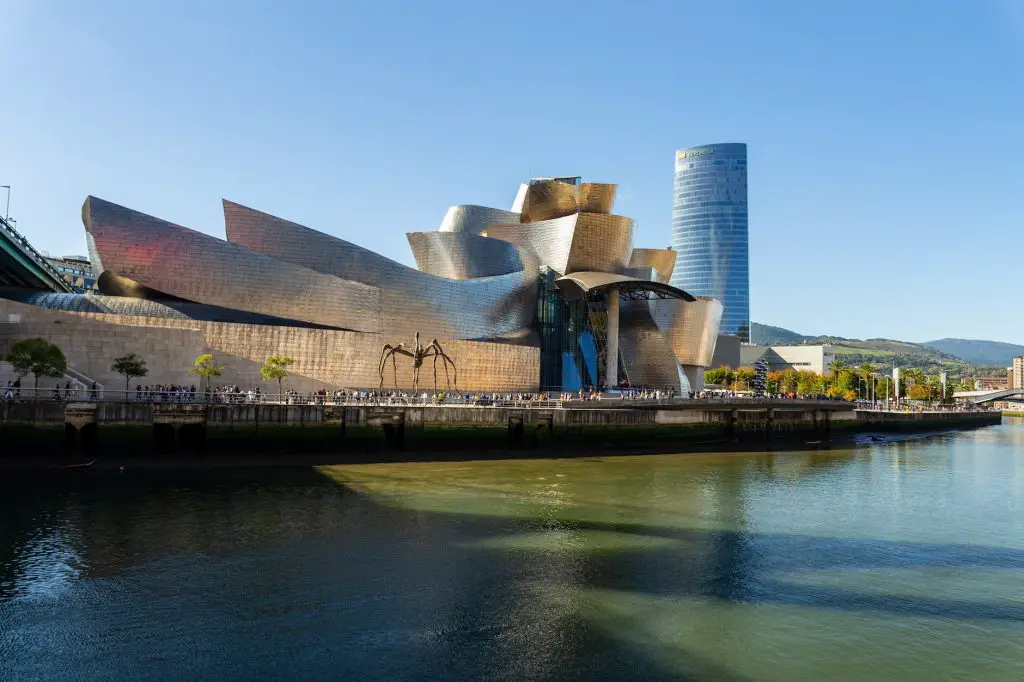
The Legacy of Capitalist Architecture
Architectural styles that emerged under capitalist ideology continue to shape the urban landscape of Western Europe and North America. Skyscrapers, suburban communities and commercial developments are a testament to the economic prosperity and entrepreneurial spirit of capitalist societies. Although these architectural expressions have been criticized for their environmental impact and social inequalities, they remain an integral part of the built environment and a reflection of the values and aspirations of capitalist societies.
The Role of Government Policies in Shaping Architectural Styles
The Impact of Government Policies on the Development of Modernist Architecture in the 20th Century
Government policies played an important role in shaping the development of modernist architecture in the 20th century. Modernism, a movement that emerged in the late 19th and early 20th centuries, aimed to break with traditional architectural styles and adopt new technologies, materials and design principles. The implementation of specific government policies facilitated the growth and acceptance of modernist architecture.
Embracing Progress and Innovation
One of the most important factors influencing the development of modernist architecture was the importance that governments placed on progress and innovation. Governments in many countries recognized the potential of modernist architecture to symbolize social progress and economic growth. They actively supported and encouraged the adoption of modernist principles through various policies and initiatives.
Zoning and Urban Planning
Government policies on zoning and urban planning also played an important role in the development of modernist architecture. Zoning regulations, which dictated how land was to be used and developed, often allowed for the construction of taller buildings and the creation of more open and spacious urban environments. This gave modernist architects the freedom to experiment with new forms and designs.

Public Infrastructure Projects
Government investment in public infrastructure projects further facilitated the growth of modernist architecture. Large-scale projects such as the construction of highways, airports and public buildings provided opportunities for modernist architects to showcase their innovative designs and construction techniques. These projects also served as symbols of progress and modernity.
Examples of Modernist Architecture Influenced by Government Policies
Many iconic examples of modernist architecture around the world have been influenced by government policies. A notable example is the Bauhaus School in Germany, founded in 1919, which became a leading institution for modernist design and education. The German government’s support for the Bauhaus School allowed it to flourish and produce influential architects and designers.


Another important example is the United Nations Headquarters in New York. The construction of this international symbol of diplomacy and cooperation was made possible by the cooperation of many governments. The modernist design of the complex reflects the ideals of transparency, efficiency and international cooperation.
The Role of State Support in the Development of Post-Modern Architecture at the End of the 20th Century
State subsidies played an important role in the development of post-modern architecture in the late 20th century. Post-modernism emerged as a reaction against the perceived coldness and impersonality of modernist architecture. It sought to reintroduce historical references, ornamentation and contextual design into architectural practice. Government support through subsidies and incentives allowed post-modern architects to explore these new design approaches.
Conservation of Historic Buildings
One of the key aspects of post-modern architecture was the inclusion of historical references and the preservation of historic buildings. Government subsidies and incentives were often provided to encourage the restoration and adaptive reuse of historic buildings. This helped revitalize urban areas and preserve cultural heritage, while allowing post-modern architects to experiment with blending traditional and contemporary design elements.
Affordable Housing Initiatives
Government subsidies have also played a role in the development of post-modern architecture through affordable housing initiatives. Many governments recognized the need for affordable housing and provided financial support to developers who incorporated post-modern design principles into their projects. This has enabled the creation of diverse and visually interesting housing options for a wider range of residents.
Arts and Culture Finance
Government funding for arts and culture initiatives has also contributed to the development of post-modern architecture. Grants and subsidies were often provided to support architectural projects that adopted post-modern design principles and contributed to the cultural and artistic fabric of a society. This financial support allowed architects to push the boundaries of design and create visually striking and thought-provoking buildings.
Examples of Post-Modern Architecture Influenced by State Subsidies
Many important examples of post-modern architecture have been influenced by state subsidies. One prominent example is Piazza d’Italia in New Orleans, Louisiana. Designed by architect Charles Moore, this public plaza received government funding as part of an urban revitalization effort. The design incorporates historical motifs and playful elements that reflect a post-modern approach to architecture.

Another important example is the Sainsbury Wing of the National Gallery in London, designed by architect Robert Venturi. The construction of this post-modern addition to the historic museum was made possible by government funding. The design embraces contemporary materials and forms while incorporating classical elements.
The Impact of Government Regulations on Sustainable Architectural Design in the 21st Century
Government regulations have had a significant impact on the design of sustainable architecture in the 21st century. As concerns about climate change and environmental sustainability have increased, governments around the world have introduced regulations and incentives to promote energy-efficient and environmentally friendly building practices. These regulations have shaped the design and construction of sustainable architecture.
Building Codes and Standards
Government regulations in the form of building codes and standards have played an important role in promoting sustainable architecture. These regulations often include requirements for energy efficiency, water conservation, waste management and the use of environmentally friendly materials. By setting minimum standards for sustainable design, governments have encouraged architects and builders to incorporate green building practices into their projects.
Renewable Energy Incentives
Many governments have implemented incentives and subsidies to encourage the use of renewable energy sources in buildings. These incentives may include tax credits, grants or feed-in tariffs for the installation of solar panels, wind turbines or geothermal systems. By providing financial support for renewable energy technologies, governments have encouraged architects to design buildings that can generate their own clean energy and reduce dependence on fossil fuels.
Green Building Certificate Programs
Government regulations have also led to the development of green building certification programs. These programs, such as LEED (Leadership in Energy and Environmental Design) and BREEAM (Building Research Establishment Environmental Assessment Method), provide a framework for the assessment and recognition of buildings that meet specific sustainability criteria. Architects and developers are encouraged to design and construct buildings that meet the requirements of these certification programs, as this can increase the marketability and value of the property.


Urban Planning and Smart Growth Initiatives
Government regulations on urban planning and smart growth have influenced the design of sustainable architecture in urban areas. These regulations often prioritize compact, mixed-use development that reduces the need for automobile transportation and encourages walkability and public transport. By encouraging the development of dense, pedestrian-friendly neighborhoods, governments have created opportunities for architects to design sustainable buildings that integrate into the fabric of the city.
Material and Waste Management
Government regulations have also addressed sustainable material use and waste management practices in construction. Some governments have introduced regulations restricting the use of certain materials, such as asbestos or lead-based paints, due to their adverse environmental and health impacts. In addition, regulations may require builders to implement recycling and waste reduction strategies during the construction and demolition processes. These regulations have prompted architects to consider the life cycle of materials and design buildings that minimize waste generation and encourage recycling.
Examples of Sustainable Architecture Influenced by Government Regulations
Numerous examples of sustainable architecture around the world have been influenced by government regulations. One notable example is in London, England Beddington Zero Energy Development(BedZED) . This mixed-use development is designed to be carbon-neutral and includes a variety of sustainable features such as passive solar design, energy efficient systems and renewable energy generation. The project received support from the local government, which provided funding and incentives for its sustainable design.

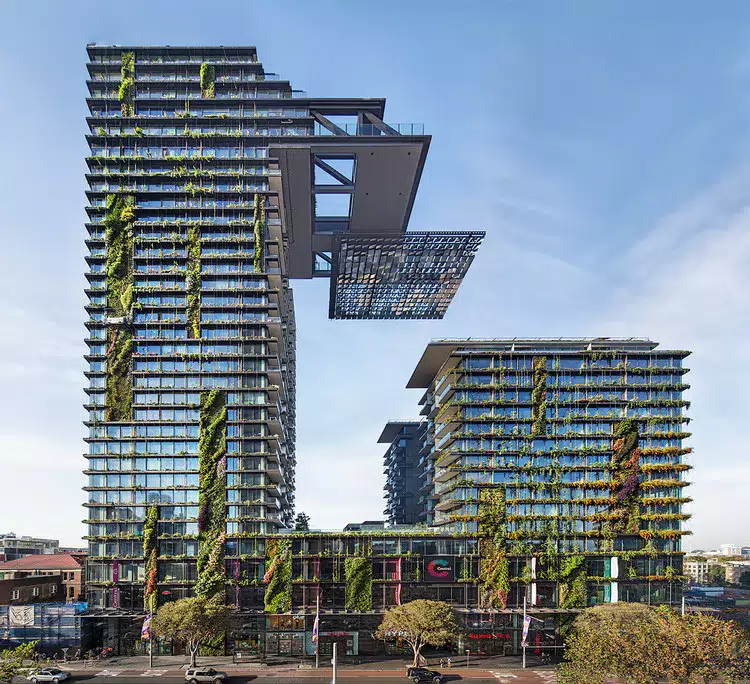
Another example is the One Central Park project in Sydney, Australia. This high-rise residential complex features vertical gardens, solar panels and a three-generation system that produces electricity, heating and cooling. The building’s design was influenced by government regulations that encourage sustainable development and energy-efficient design practices.
The Impact of Political and Social Movements on Architectural Styles
Architecture is not only about creating functional structures; it is also a reflection of the political and social climate of a given period. Throughout history, various political and social movements have influenced architectural styles and shaped the way buildings are designed and constructed. In this article, we will examine the impact of three important movements on architectural styles: The Arts and Crafts movement of the early 20th century, the Civil Rights movement of the 1960s and 1970s, and the environmental movement of the late 20th and early 21st centuries.
The Impact of the Arts and Crafts Movement on Architectural Styles in the Early 20th Century
The Arts and Crafts movement, which emerged in the late 19th century, aimed to counter the negative effects of industrialization and mass production. It emphasized the importance of craftsmanship, simplicity and the use of natural materials. This movement had a profound impact on architectural styles in the early 20th century.
Influenced by the Arts and Crafts movement, architects sought to create buildings in harmony with their natural surroundings. They incorporated elements such as exposed wooden beams, handcrafted details and organic shapes into their designs. The movement also encouraged a sense of regional identity in architecture by emphasizing the use of local materials and traditional construction techniques.
A notable example of the influence of the Arts and Crafts movement on architectural styles is the work of architect Frank Lloyd Wright. Wright’s designs, such as the Waterfall House and Robie House, demonstrated his determination to integrate nature and architecture. These buildings featured open floor plans, large windows that let in natural light, and a seamless connection between indoors and outdoors.
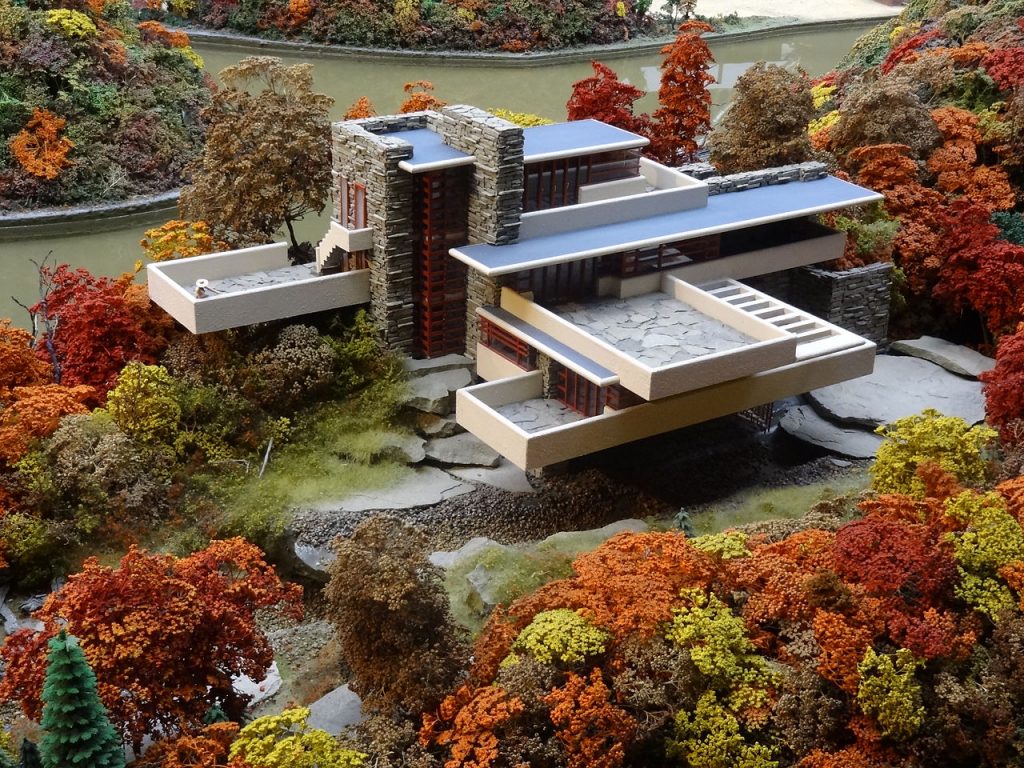
The Impact of the Civil Rights Movement on Public Housing Design in the 1960s and 1970s
The Civil Rights movement of the 1960s and 1970s fought for racial equality and social justice. This movement had a significant impact on public housing design, especially in urban areas where segregation and inequality were prevalent.
During this period, architects and urban planners began to question the traditional approach to public housing, which often resulted in large, impersonal housing projects that isolated communities. The Civil Rights movement called for housing that promoted integration, community participation and equal access to amenities and services.
The architects responded to these demands by designing residential projects with common areas, community centers and recreational spaces. They also focused on creating buildings that are aesthetically pleasing and respectful of the surrounding urban fabric. Examples of this approach include the revitalization of neighborhoods such as Harlem in New York City, where architects worked closely with community members to design affordable housing that preserves the cultural identity of the neighborhood.


Çevre Hareketinin 20. Yüzyıl Sonu ve 21. Yüzyıl Başında Sürdürülebilir Mimarlığın Gelişimine Etkisi
Yirminci yüzyılın sonlarında ivme kazanan çevre hareketi, insan faaliyetlerinin gezegen üzerindeki etkisi konusunda farkındalık yarattı. Bu hareket, mimari ve inşaat da dahil olmak üzere hayatın her alanında sürdürülebilir uygulamalar çağrısında bulundu.
Mimarlar ve tasarımcılar enerji verimliliğine, yenilenebilir malzemelere ve çevre dostu bina uygulamalarına öncelik vermeye başladı. Sürdürülebilir mimarinin gelişimi, binaların karbon ayak izini azaltmaya, atıkları en aza indirmeye ve daha sağlıklı iç ortamlar yaratmaya odaklandı.
Çevre hareketine yanıt olarak mimarlar güneş panelleri, yeşil çatılar, yağmur suyu toplama sistemleri ve doğal havalandırma gibi özellikleri tasarımlarına dahil etmeye başladılar. Ayrıca, atıkları azaltmak ve tarihi yapıları korumak için mevcut binaları yıkmak yerine yenileyerek uyarlamalı yeniden kullanım kavramını benimsediler.








The LEED (Leadership in Energy and Environmental Design) certification system developed by the US Green Building Council has become a widely recognized standard for sustainable building design. Architects and developers have sought LEED certification for their projects, further encouraging the adoption of sustainable practices in the industry.
The Relationship between Political Power and Architectural Patronage
Architecture has long been intertwined with political power and patronage. Throughout history, political leaders have played an important role in commissioning and designing architectural projects. This paper will explore the relationship between political power and architectural patronage, focusing on the role of political leaders in commissioning projects, the influence of political power on the design of government buildings and public spaces, and the relationship between political patronage and the development of architectural styles in different regions and cultures.
The Role of Political Leaders in the Commissioning of Architectural Projects Throughout History
Political leaders have often used architecture as a means to project their power, prestige and legacy. They have commissioned grand buildings and monuments to leave a lasting impression on their subjects and future generations. From ancient civilizations to modern democracies, political leaders have sought to shape the built environment to reflect their ideals and aspirations.
In ancient Egypt, pharaohs built monumental structures such as the Great Pyramids and temples to demonstrate their divine authority and establish their legacy. In Renaissance Italy, powerful families like the Medici and the Vatican commissioned famous architects like Michelangelo and Brunelleschi to create magnificent palaces, churches and public spaces that showcased their wealth and influence.
Even in modern times, political leaders continue to commission architectural projects that symbolize their power and vision. For example, the construction of large government buildings, such as the White House in the United States or the Palace of Westminster in the United Kingdom, serves as a physical manifestation of political authority and national identity.


The Impact of Political Power on the Design of Government Buildings and Public Spaces
Political power has a significant influence on the design of government buildings and public spaces. These structures often serve as symbols of the state and reflect the values and ideologies of the regime in power. The design and architecture of these buildings can convey messages of power, stability and authority.
Authoritarian regimes may favor monumental and imposing architectural styles to demonstrate their dominance and intimidate the population. The Stalinist architecture of the Soviet Union, characterized by massive, neoclassical buildings, exemplifies this approach. These structures were designed to reflect the power and permanence of the Communist regime.

In contrast, democratic societies may prioritize transparency, accessibility and public participation in the design of government buildings. Architectural styles that emphasize openness and inclusiveness, such as modernist or contemporary designs, are often preferred. These buildings aim to create a sense of civic pride and establish a bond between government and citizens.
Public spaces such as parks, plazas and squares are also under the influence of political power. These spaces serve as venues for political gatherings, protests and celebrations. The design and accessibility of these spaces can facilitate or hinder public participation and expression. Political leaders can shape the design of public spaces to control or encourage certain activities and interactions between citizens.
The relationship between political patronage and the development of architectural styles in different regions and cultures
Political patronage played an important role in the development of architectural styles in different regions and cultures. Political leaders, as patrons, often favored particular architectural styles that aligned with their cultural, religious or political beliefs.
In ancient Greece, city-states competed with each other to build great temples and public buildings that demonstrated their power and devotion to the gods. The architectural style known as classical Greek architecture emerged as a result, characterized by the use of columns, pediments and symmetrical designs.
Political patronage in Islamic civilizations led to the development of distinctive architectural styles such as Moorish, Mughal and Ottoman architecture. These styles featured intricate geometric patterns, calligraphy and ornate details that reflected the cultural and religious values of the ruling elite.
In Renaissance Europe, the political patronage of wealthy families and the Catholic Church led to the development of architectural styles such as Gothic, Renaissance and Baroque. These styles were often used to glorify the patron and convey religious or political messages.
Even today, political patronage continues to shape architectural styles. The United Arab Emirates, for example, has embraced modernist and futuristic architecture as a symbol of its economic power and global influence. The iconic Burj Khalifa and the Louvre Abu Dhabi are prime examples of this architectural approach.
The Impact of Globalization on Architectural Styles
Like many other aspects of culture, architecture has been greatly affected by globalization. The interconnectedness of the world has led to the spread of architectural styles across borders, the development of vernacular architectural styles in different regions, and the role of international architectural firms in shaping global architectural trends. In this article, we will examine the impact of globalization on architectural styles, focusing on the influence of Western architectural styles, the development of vernacular styles and the role of international firms.
The Effect of Globalization on the Spread of Western Architectural Styles Worldwide
Globalization has played an important role in the spread of Western architectural styles around the world. As Western countries have become centers of economic and cultural power, their architectural styles have gained popularity and influence. The dominance of Western architectural styles can be attributed to various factors such as colonialism, media influence and the global reach of architectural education.
During the colonial period, Western powers imposed their own architectural styles on the regions they colonized. This led to the widespread adoption of Western architectural elements and the displacement of local styles. Examples of this can be seen in neoclassical buildings in former European colonies, such as India and parts of Africa, which were heavily influenced by British and French architectural traditions.
The media has also played an important role in the promotion of Western architectural styles. Through movies, television programs, magazines and the internet, images of Western architecture have been disseminated globally, creating the perception that Western styles are desirable and modern. This has led to the imitation of Western architectural aesthetics in many parts of the world.
Moreover, the globalization of architectural education has also contributed to the spread of Western architectural styles. Many aspiring architects from non-Western countries choose to study in Western institutions where they are exposed to Western design principles and techniques. When these architects return to their home countries, they often incorporate Western elements into their designs, further perpetuating the influence of Western architectural styles.
The Impact of Globalization on the Development of Local Architectural Styles in Different Regions
While globalization has led to the spread of Western architectural styles, it has also had a profound impact on the development of local architectural styles in different regions. As cultures interact and exchange ideas, local architects and designers have been inspired to reinterpret and adapt Western architectural elements to suit their own cultural context.
In many parts of the world, there is a resurgence of interest in traditional architectural styles and a movement towards incorporating local materials, techniques and design principles. This can be seen in the rise of vernacular architecture, which emphasizes local craftsmanship, sustainability and the use of indigenous materials. Architects and designers are increasingly seeking to create buildings that respond to contemporary needs and global influences, while reflecting the unique cultural identity of their region.
Globalization has also facilitated the exchange of architectural ideas and the fusion of different styles. Architects and designers can now draw inspiration from a wide variety of sources, blending traditional and modern elements to create hybrid architectural styles. This can be seen in the incorporation of traditional motifs and materials into contemporary designs, as well as the integration of modern technologies and sustainable practices into traditional architecture.
The Role of International Architecture Firms in Shaping Global Architectural Styles
International architecture firms have played an important role in shaping global architectural styles. Often based in Western countries, these firms have the resources, expertise and global reach to undertake large-scale projects around the world. Their designs and architectural philosophies have a far-reaching impact on the built environment.
International firms bring a wealth of knowledge and experience, as well as access to the latest technologies and design trends. Their projects often serve as showcases of innovation and architectural excellence that influence local architects and developers. Their designs can set new standards in aesthetics, functionality and sustainability, shaping the expectations and aspirations of clients and communities.
However, the influence of international firms is not without controversy. Critics argue that their dominance can lead to the homogenization of architectural styles, as local identities and cultural nuances are overshadowed by global trends. There are also concerns that international firms may prioritize profit and prestige over local needs and context, leading to the displacement of local architects and the loss of cultural heritage.
In recent years, the importance of collaboration and dialogue between international and local architects has been increasingly recognized. Many international firms are now actively engaging with local communities, seeking to understand their needs and aspirations and incorporating local input into their designs. This approach allows for the creation of architecture that is both globally relevant and locally rooted.
Conclusion
In conclusion, the relationship between politics and architecture is a complex and important one. Throughout history, political regimes have influenced architectural styles and shaped the built environment to reflect their ideologies and values. From the grandeur of ancient civilizations to the austere simplicity of totalitarian regimes, architecture has been used as a means of political expression and control.
As we explore in this article, the connection between politics and architecture goes beyond mere aesthetics. It encompasses the social, cultural and economic dimensions of a society. Architecture has the power to shape our experiences, influence our behavior and convey messages of power and authority.
While the relationship between politics and architecture has been evident in the past, it continues to evolve today and will likely continue to do so in the future. As political ideologies shift and new regimes come to power, we can expect to see the emergence of new architectural styles that reflect these changes. Whether it is the adoption of sustainable design in response to environmental concerns or the integration of technology in smart cities, politics will undoubtedly leave its mark on the built environment.
As architects, designers and citizens, it is important that we are aware of the political dimensions of architecture. By understanding the historical context and the ideologies underlying architectural styles, we can better appreciate the importance of the spaces we live in. Moreover, by actively participating in the political discourse surrounding architecture, we can contribute to the creation of inclusive, sustainable and socially responsible built environments.
In conclusion, the relationship between politics and architecture is dynamic and multifaceted. It is a reflection of our collective values, aspirations and power dynamics. By recognizing and critically examining this relationship, we can develop a more informed and conscious approach to the design and construction of our built environment.
Summary of Key Points
- Architecture is not only about aesthetics; it is deeply intertwined with politics.
- Political regimes have historically used architecture to express power and control.
- Architecture can shape our experiences, behaviors and social values.
- The relationship between politics and architecture is ongoing and will continue to evolve.
- It is important that architects and citizens are aware of the political dimensions of architecture.
The Importance of the Relationship between Politics and Architecture
The relationship between politics and architecture is important for several reasons. First, architecture is a concrete expression of power and authority. Throughout history, political regimes have sought to assert their sovereignty and leave a lasting legacy through monumental structures and grandiose designs. From the pyramids of ancient Egypt to the palaces of European monarchs, architecture has been used to symbolize political power and reinforce social hierarchies.
Second, architecture plays a crucial role in shaping our experiences and behaviors. The design of public spaces such as parks, plazas and government buildings can influence how we interact with our environment and each other. For example, a city with well-designed public transportation systems and pedestrian-friendly streets can promote social cohesion and a sense of community. On the other hand, a city with sprawling highways and car-centric infrastructure can promote isolation and individualism.
Architecture also reflects the cultural and social values of a particular time and place. Different architectural styles and motifs can carry certain meanings and evoke certain emotions. For example, the Gothic architecture of medieval cathedrals evokes a sense of awe and spirituality, while the sleek lines and glass facades of modernist buildings evoke a sense of progress and technological advancement. By studying the architectural styles of a particular period, we can gain insight into the prevailing social, cultural and political ideologies of that time.
Finally, the relationship between politics and architecture is important as it has the potential to shape the future of our built environment. As political regimes come and go, architectural styles and design principles can change accordingly. For example, in response to growing concerns about climate change, there has been a shift towards sustainable design practices and the use of renewable materials. Similarly, advances in technology and urban planning have led to the emergence of smart cities that prioritize efficiency, connectivity and sustainability.
The Potential of Political Regimes to Shape Future Architectural Styles
Looking to the future, it is clear that political regimes will continue to shape architectural styles in various ways. With increasing awareness of environmental issues, we can expect to see a greater emphasis on sustainable design and green architecture. This could include the integration of renewable energy systems, the use of environmentally friendly materials and the creation of buildings that are in harmony with their natural surroundings.
Furthermore, as societies become more interconnected and globalized, architectural styles can become more diverse and eclectic. The blending of different cultural influences and design traditions can lead to the creation of unique and innovative architectural forms. This can be seen in contemporary cities where traditional architectural elements coexist with modernist skyscrapers and postmodernist structures.
Frequently Asked Questions (FAQ)
How did political ideologies influence architectural styles?
Political ideologies have influenced architectural styles by shaping the values, priorities and goals of societies. For example, fascist ideology emphasized power and authority, leading to the development of monumental and austere architectural designs. Socialist and communist ideologies focused on collective ownership and social equality, leading to the construction of mass housing and public spaces. Capitalist ideology, on the other hand, prioritized individualism and profit, leading to the rise of modernist and commercial architecture.
What are some examples of fascist architecture in Italy?
Some examples of fascist architecture in Italy include the EUR district in Rome, where the Palazzo della Civiltà Italiana is located, and the Foro Italico, which includes the Stadio dei Marmi. These buildings embody the principles of Rationalist architecture and project an image of power and control.
How did socialist and communist ideologies affect architecture in Eastern Europe?
Socialist and communist ideologies influenced architecture in Eastern Europe by promoting the ideals of the working class and the achievements of the socialist state. The result was Socialist Realist architecture, mass housing projects and grand public spaces that symbolized the strength and unity of the socialist regime.
What are some examples of socialist and communist architecture in Eastern Europe?
Some examples of socialist and communist architecture in Eastern Europe include the Palace of Parliament in Bucharest, Romania and the Nowa Huta district in Kraków, Poland. These buildings and districts demonstrate the grandeur and ambition of the socialist and communist regimes.
How did capitalism affect architectural styles in Western Europe and North America?
Capitalism influenced architectural styles in Western Europe and North America by promoting modernist and commercial architecture. The pursuit of profit, individualism and consumerism shaped the built environment, resulting in the development of skyscrapers, suburban communities and commercial developments that symbolized economic progress and the aspirations of capitalist societies.
How did the Arts and Crafts movement influence architectural styles in the early 20th century?
The Arts and Crafts movement emphasized craftsmanship, simplicity and the use of natural materials in architecture. Architects influenced by this movement incorporated elements such as exposed wooden beams, handcrafted details and organic shapes into their designs. They also encouraged a sense of regional identity in architecture by prioritizing the use of local materials and traditional building techniques.
What impact did the Civil Rights movement have on the design of public housing in the 1960s and 1970s?
The Civil Rights movement called for housing that promotes integration, social inclusion and equal access to amenities and services. Architects and urban planners responded by designing public housing projects that included common spaces, community centers and recreational areas. They also focused on creating buildings that are aesthetically pleasing and respectful of the surrounding urban fabric.
How has the environmental movement influenced the development of sustainable architecture?
The environmental movement has raised awareness of the impact of human activity on the planet and called for sustainable practices in all aspects of life, including architecture. In response to this movement, architects began to prioritize energy efficiency, renewable materials and eco-friendly building practices. They incorporated features such as solar panels, green roofs, rainwater harvesting systems and natural ventilation into their designs. The concept of adaptive reuse, which means renovating existing buildings rather than demolishing them, has also gained popularity to reduce waste and preserve historic structures. The development of sustainable architecture was further encouraged by the introduction of certification systems such as LEED (Leadership in Energy and Environmental Design), which has become a recognized standard for sustainable building design.
Can you give examples of architectural styles influenced by the Arts and Crafts movement?
Definitely! The Arts and Crafts movement influenced various architectural styles in the early 20th century. Some notable examples include:
- Craftsman Style: Popularized by architects such as Greene and Greene, this architectural style emphasized handmade details, exposed wooden beams, and a connection to nature. Craftsman homes often had low-pitched roofs, wide eaves and front porches.
- Prairie Style: Developed by Frank Lloyd Wright, Prairie Style embraced horizontal lines, open floor plans and integration with the surrounding landscape. It emphasized simplicity, natural materials and a harmonious relationship between interior and exterior spaces.
- Bungalow Style: Bungalows became a popular architectural style during the Arts and Crafts movement. These one-story homes had a low-pitched roof, a wide front porch, and an open interior layout. Bungalows often exhibit handcrafted details and natural materials.
How has the environmental movement influenced the design of commercial buildings?
The environmental movement has had a significant impact on the design of commercial buildings. Architects and developers are now prioritizing energy efficiency, sustainable materials and environmentally friendly practices in commercial construction. Here are some key features and design elements:
- Green roofs and living walls: These features help improve insulation, reduce stormwater runoff and provide natural habitats for plants and wildlife.
- Daylight: Designers prioritize maximizing natural light in commercial buildings to reduce reliance on artificial lighting and create a healthier and more productive environment for building occupants.
- Water conservation: Water-saving fixtures, rainwater harvesting systems and efficient irrigation methods are implemented in commercial buildings to minimize water waste.
- Indoor air quality: Designers focus on using low VOC (volatile organic compounds) materials, appropriate ventilation systems and natural ventilation strategies to improve indoor air quality and passenger comfort.
By incorporating these sustainable design practices, commercial buildings can reduce their environmental impact, improve energy efficiency and create healthier spaces for occupants.
How have political leaders used architecture to project their power throughout history?
Political leaders have used architecture to project their power by commissioning grand buildings and monuments that leave a lasting impression on their subjects and future generations. These structures serve as symbols of authority, prestige and heritage. Throughout history, political leaders have sought to shape the built environment to reflect their ideals and aspirations.
How does political power influence the design of government buildings and public spaces?
Political power has a significant influence on the design of government buildings and public spaces. These structures often serve as symbols of the state and reflect the values and ideologies of the regime in power. The design and architecture of these buildings can convey messages of power, stability and authority. The style and layout of public spaces can also be influenced by political power in a particular region or culture.
How does political patronage affect the development of architectural styles?
Political patronage played an important role in the development of architectural styles in different regions and cultures. As patrons, political leaders often favored certain architectural styles that conformed to their cultural, religious or political beliefs. This support can lead to the rise and popularity of certain architectural styles, as well as the incorporation of specific design elements and motifs.
What are examples of architectural styles influenced by political patronage?
There are numerous examples of architectural styles influenced by political patronage. In Ancient Greece, Classical Greek architecture emerged as a result of city-states competing with each other to build great temples and public buildings. In Islamic civilizations, political patronage led to the development of distinctive architectural styles such as Moorish, Mughal and Ottoman architecture. In Renaissance Europe, the political patronage of wealthy families and the Catholic Church led to the development of architectural styles such as Gothic, Renaissance and Baroque.
How does political patronage continue to shape architectural styles today?
Even today, political patronage continues to shape architectural styles. In the United Arab Emirates, for example, modernist and futuristic architecture has been adopted as a symbol of economic power and global influence. The iconic Burj Khalifa and the Louvre Abu Dhabi are prime examples of this architectural approach. Political leaders and governments still play an important role in shaping the architectural landscape of their regions, whether through the commissioning of new projects or the preservation of historic structures.



